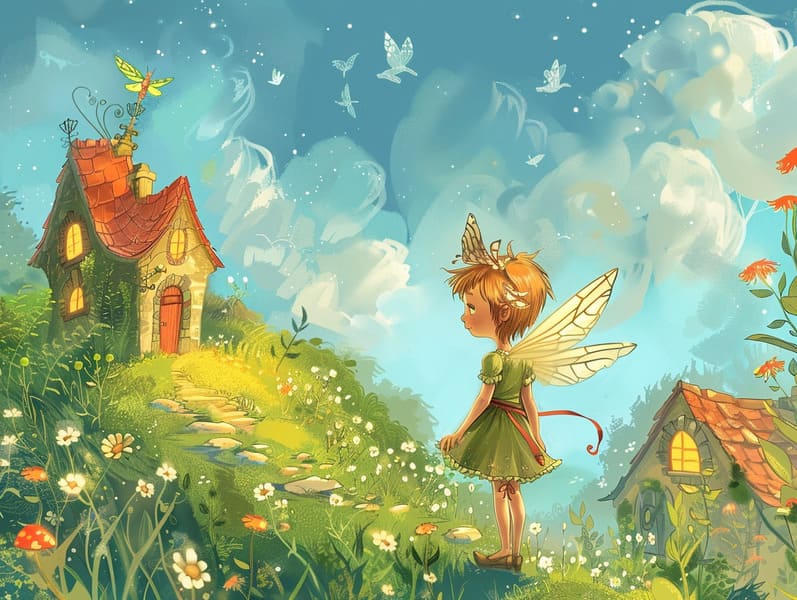The Origins of Fairy Tales to Read and Its Immortal Beauty.
The Origins of Fairy Tales to Read and Its Immortal Beauty.
Blog Article

Popular fairy tales have ancient roots. These stories have been shared from one generation to the next ages before they were ever inscribed. They originated from a variety of cultures, including African traditions. They were initially narrated among grown-ups, often carrying themes and messages mirroring the societal norms and beliefs of the time.
The Brothers Grimm, Jacob and Wilhelm Grimm, were among the first to collect and release many of these beloved fairy tales. Their anthology, "Grimm's Story Collection," included stories like "The True Bride," "Little Brother and Little Sister," and "Schneewittchen," which have since become pillars in the world of children's fairy tales. Similarly, H. C. Andersen's charming tales, such as "The Sea Maid," and "The Duckling's Story," have gained the love worldwide, establishing their place in the pantheon of classic fairy tales.
Despite their age, these stories remain as applicable as ever, especially as children's night stories. These delightful tales are now available in many formats, including gorgeously illustrated books, whimsical animations, and digital fairy tales.
Their continued relevance can be credited to several magical reasons:
Vital Lessons: Timeless fairy tales often impart important moral lessons. Stories like "The Wolf and the Liar" teach the significance of integrity, while "The Hare and the Tortoise" illustrate the values of determination and humility. These stories offer children clear distinctions between right and wrong, molding their moral compass in a tender yet impactful way.
Compassion and Knowledge: Classic fairy tales frequently include individuals facing difficulties and adversities, inspiring audiences to relate with their struggles and celebrate their triumphs. For instance, "Beauty and the Beast" emphasizes the benefit of appreciating inner worth to see the inner spirit of a soul, fostering perception and perception.
Cultural Understanding: Many traditional fairy tales are imbued with the cultural contexts from which they developed. Reading these tales can provide informative snapshots into different beliefs, cultivating a sense of world awareness and appreciation.
Fantasy and Innovation: The whimsical elements in traditional fairy tales—magical beings—inspire children’s creativity. These narratives guide readers to mythical realms, provoking fantasy ideas and a sense of astonishment that lasts a lifetime.
Classic fairy tales are not only magical but also illuminating. They act as bewitching tools in cultivating various cognitive and emotional skills in the young. When fairy tales are recited, they enhance language acquisition by offering new language and complicated sentence structures. This practice also improves listening abilities and concentration, as kids remain attentive, expectant to see what happens next.
Furthermore, examining the themes and characters of fairy tales can improve logical thinking and problem-solving abilities. Young ones are educated to discover patterns, anticipate outcomes, and figure out cause and effect. These conversations also aid children verbalize their thoughts and feelings, contributing to their emotional intelligence.
In today’s digital age, the abundance of free fairy tales online has made these narratives more obtainable than ever. Websites and web apps make available broad selections of bedtime fairy tales that can be viewed or listened to anytime, anywhere. Fairy tales recited are particularly widespread, making available an delightful method for little ones to immerse in these captivating stories. Read-aloud books and read-to-me stories bring characters and settings to life, often complemented by whimsical soundtracks and background music that elevate the narrative journey.
The enduring charm of timeless fairy tales lies in their ability to modify to today's society while holding onto their fundamental ideas. Contemporary updates of these narratives often bring in more inclusive protagonists and modern settings, making them familiar to today’s audience. However, the key lessons of spirit, benevolence, and fair-mindedness remain unchanged, continuing to affect audiences of all ages.
Fairy tales also offer a sense of serenity and predictability. They introduce a well-ordered narrative with a evident beginning, middle, and end, often coming to a close with the conclusion of conflicts and the triumph of rightness over wrongness. This predictability can be solacing for the young, making awesome site available a sense of unchangeability in an variable world.
Classic fairy tales continue to mesmerize and coach new generations, maintaining their magic and importance in modern society. As children's bedtime stories, they afford a perfect blend of fantasy and learning, facilitating moral values, empathy, and creativity. The presence of web-based fairy tales and the favor of fairy tales spoken ensure that these timeless fairy tales remain reachable to new generations.
By safeguarding and passing on these stories, we continue to praise the rich tapestry of storytelling and cultural heritage. Whether you are perusing a artistically illustrated book, exploring a cyber library, or hearing an spoken story, the grandeur of timeless fairy tales is always within reach. These stories remind us of the everlasting magic of stories and its ability to gather us across centuries and lands.
Whether you are seeing a artistically illustrated book, accessing a digital library, or listening through an narrated book, the attraction of children's fairy tales is always within reach.
These narratives demonstrate of the enduring power of narratives and its ability to link us across time and space, forging a link that enchants and educates alike.